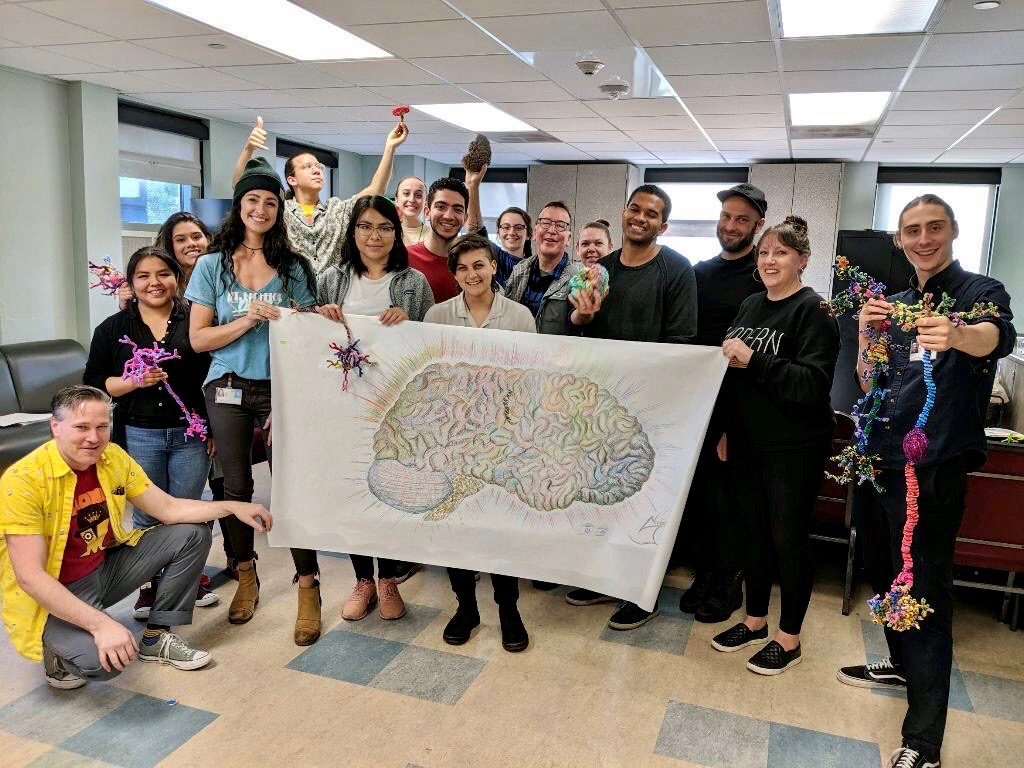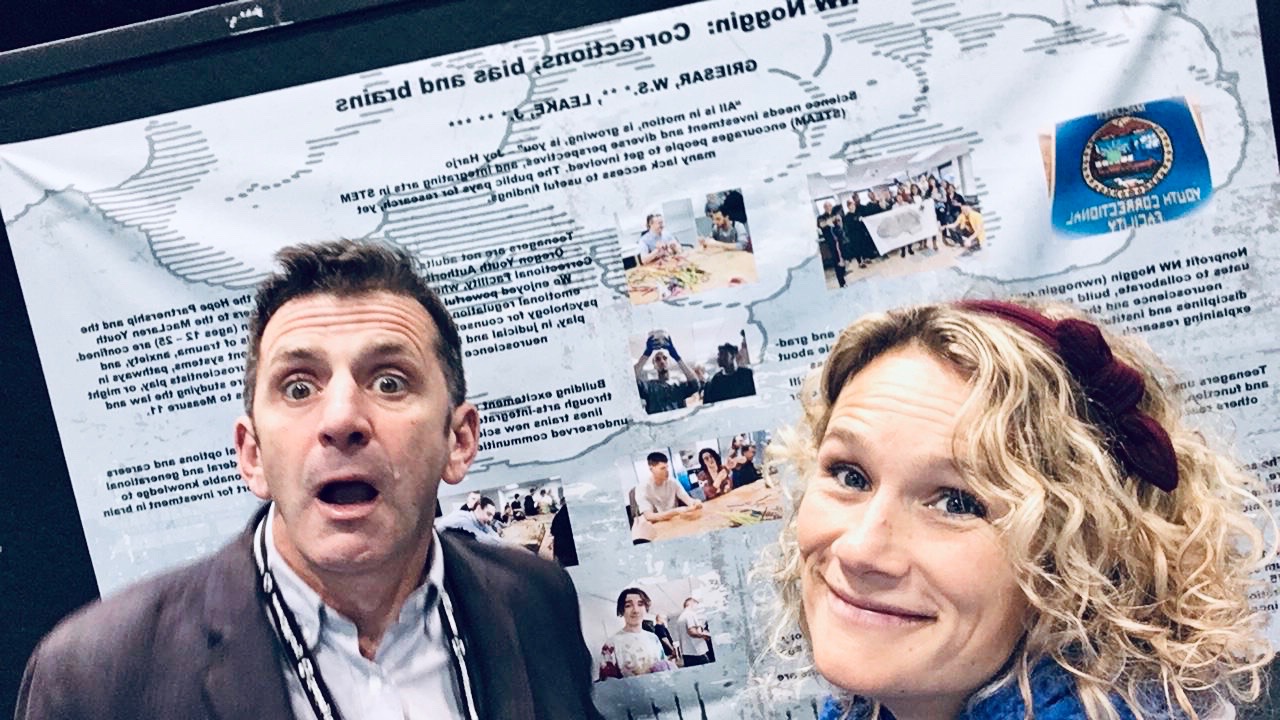
- This event has passed.
Noggin @ SfN: Theme J Poster (026.10SU / DD42)
October 20, 2019 @ 9:00 am - 10:00 am
WHAT: Noggin Poster Presentation @ SfN, Theme J (History and Education)

WHERE: McCormick Place, 2301 S King Dr, Chicago, IL 60616; 026.10SU / DD42 – NW Noggin: Corrections, bias and brains; Session 026 – Outreach Activities
WHEN: Sunday, October 20, 9:00 – 10:00am
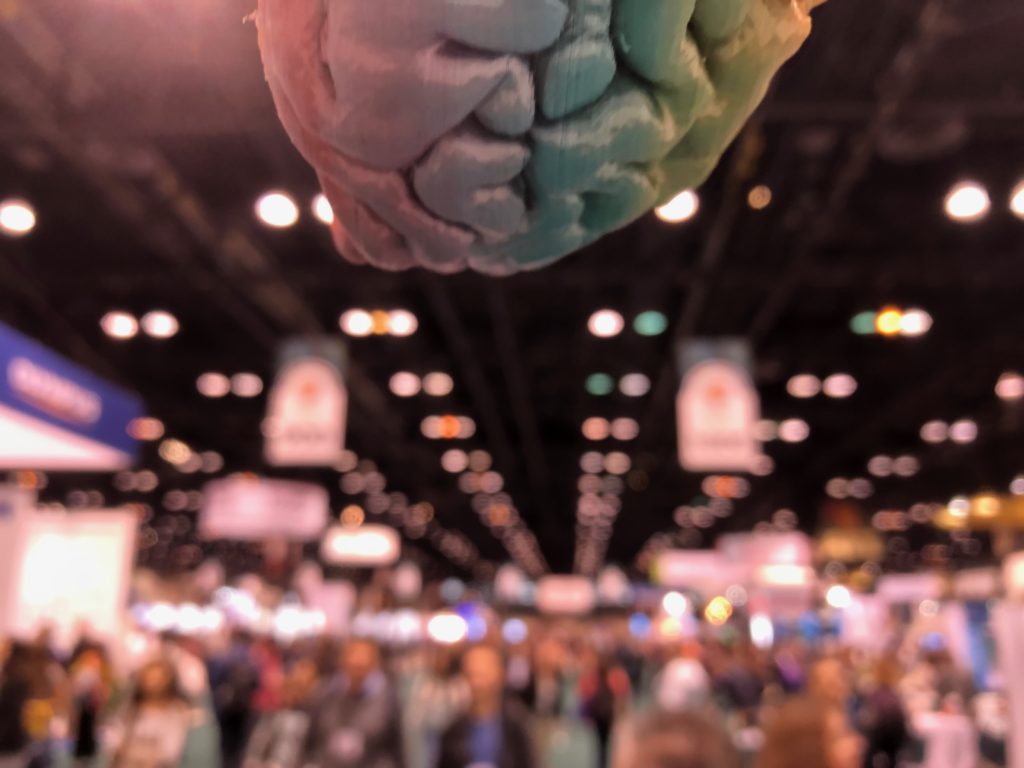
Our Theme J poster is available for viewing at SfN from Saturday, October 19 at noon through Sunday, October 20 at 5:00pm.
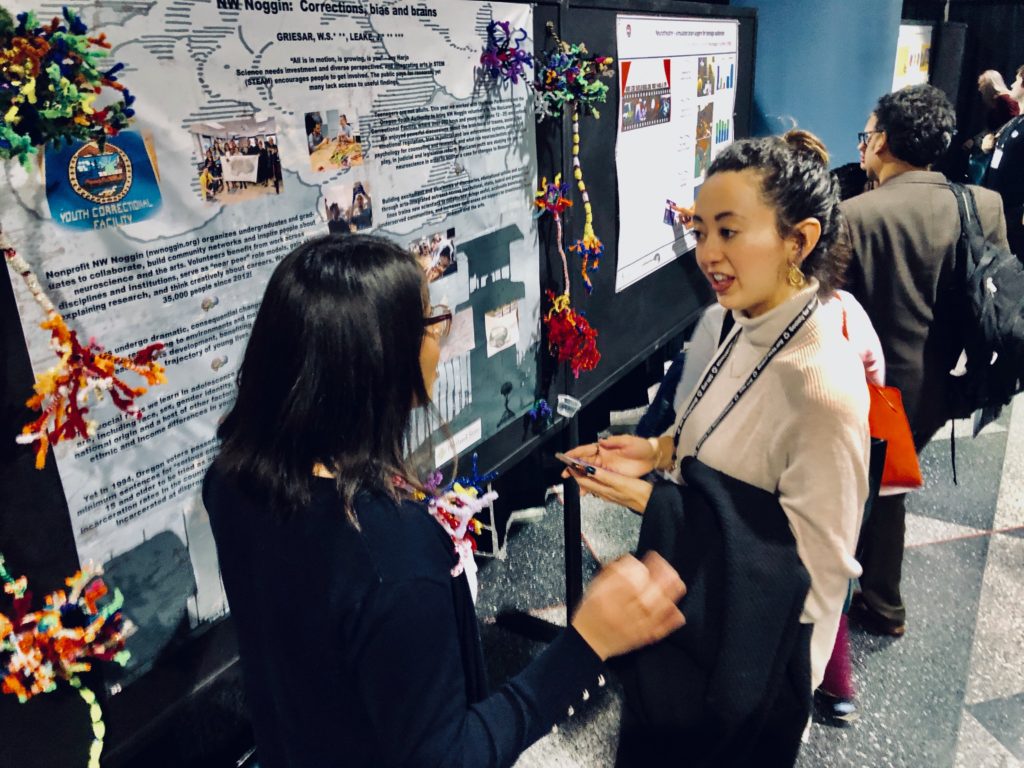
Jeff Leake, Bill Griesar, and additional NW Noggin outreach participants will be at the poster (with some extra pipe cleaner neurons!) Sunday (10/20) from 9:00am – 10:00am. Come join us!
We did it!
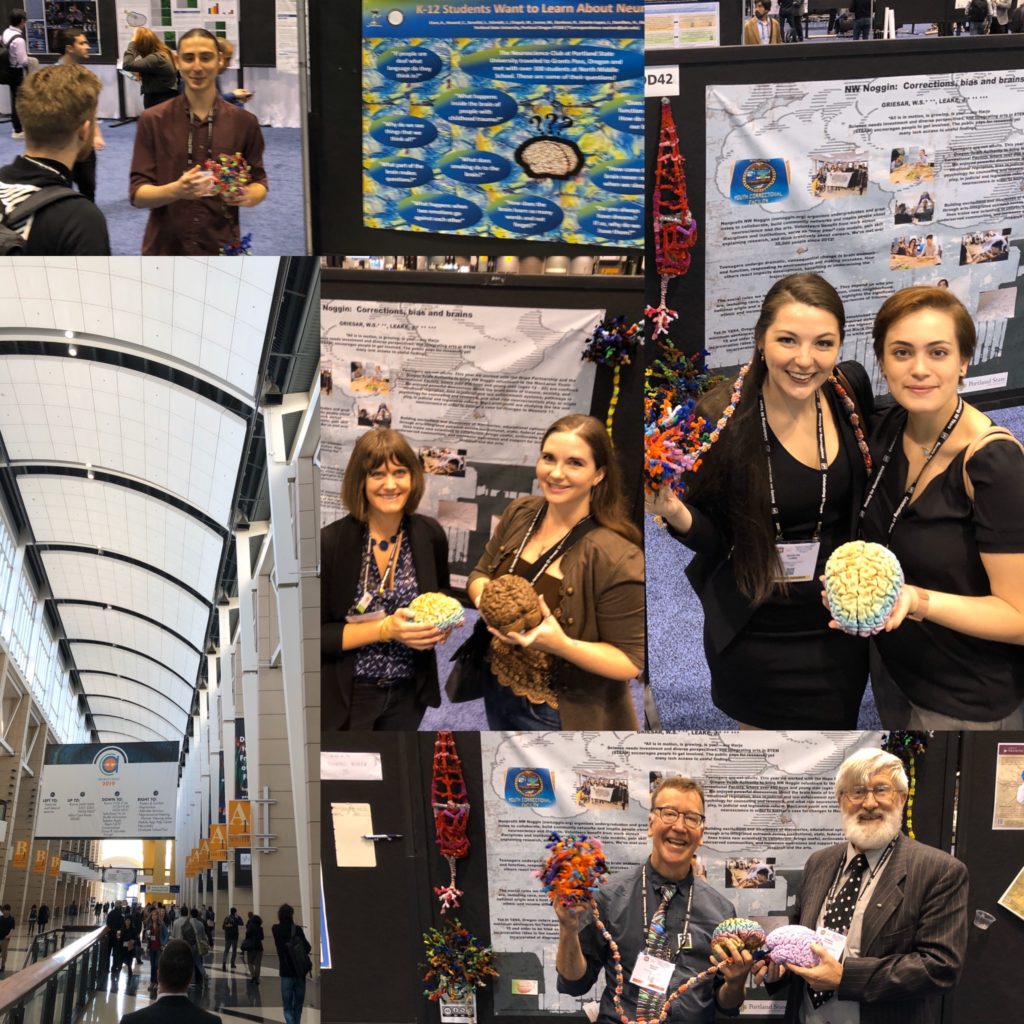
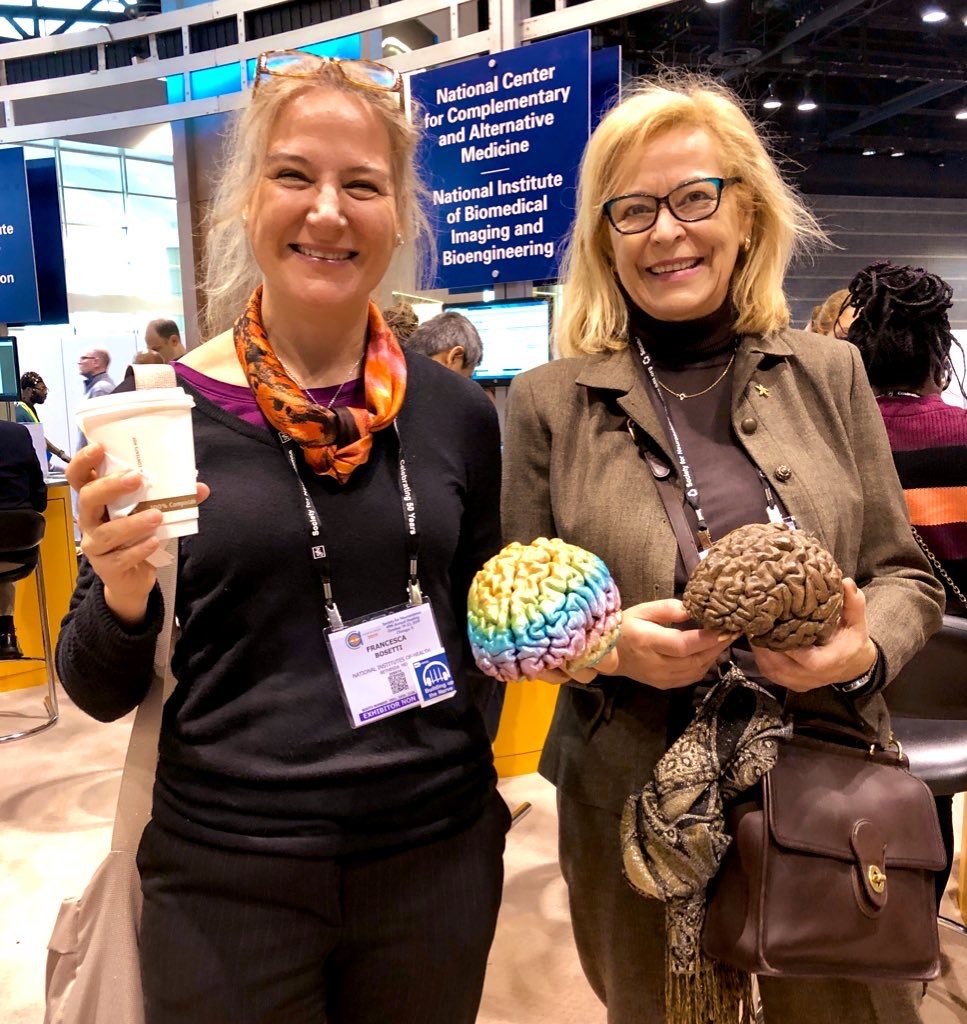
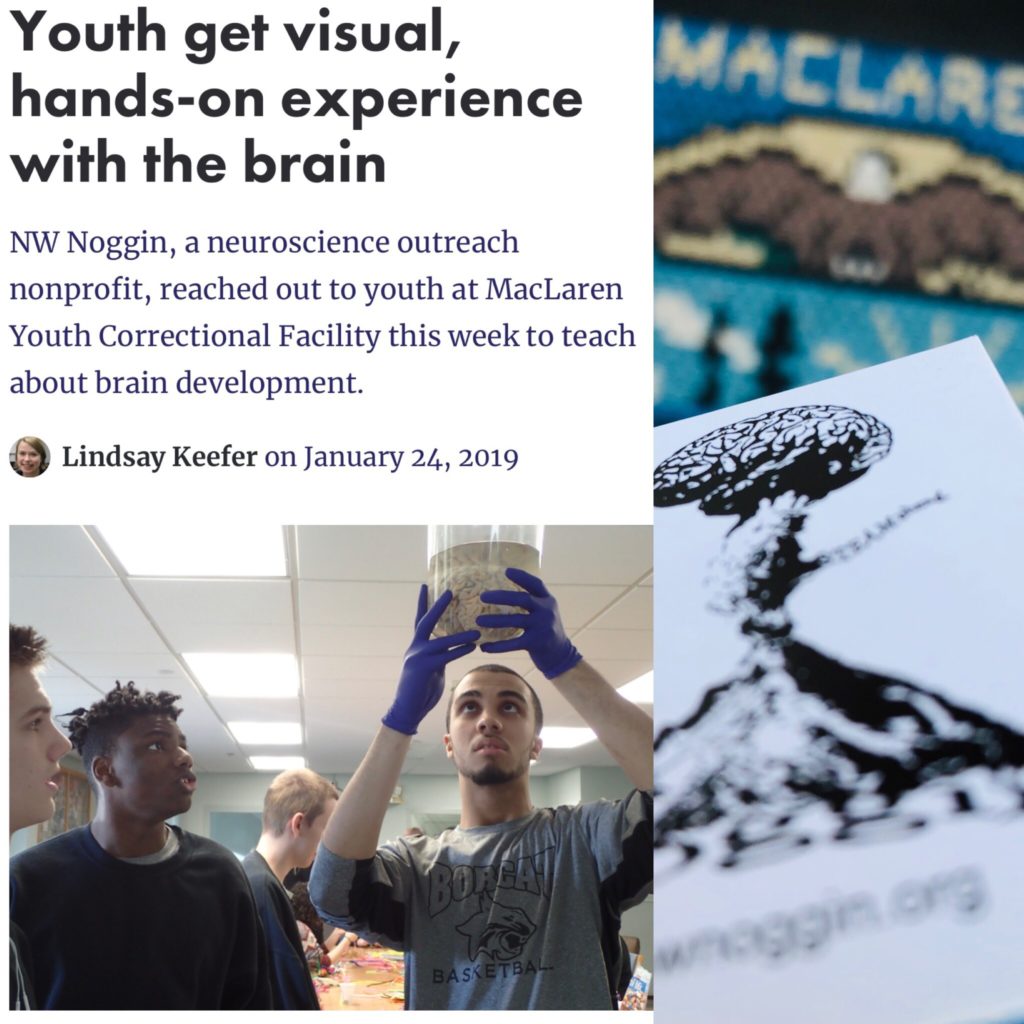
NW Noggin: Corrections, bias and brains
Authors *W. S. GRIESAR1,3,4, J. J. LEAKE4,2;
1Psychology/Neuroscience, 2Univ. Studies, Portland State Univ., Portland, OR; 3Behavioral Neurosci., Oregon Hlth. & Sci. Univ., Portland, OR; 4Art & Neurosci., NW Noggin, Portland, OR
“All is in motion, is growing, is you” – Joy Harjo
Science needs investment and diverse perspectives, and integrating arts in STEM (STEAM) encourages people to get involved. The public pays for research, yet many lack access to useful findings.
Nonprofit NW Noggin (nwnoggin.org) organizes undergraduates and graduates to collaborate, build community networks and inspire people about neuroscience and the arts. Volunteers benefit from work across disciplines and institutions, serve as “near peer” role models, gain skill explaining research, and think creatively about careers. We’ve met over 30,000 people since 2012!
Teenagers undergo dramatic, consequential change in brain anatomy and function, responding to environments and making mistakes. How others react impacts development, benefiting or undermining the trajectory of young lives.
The social rules we learn in adolescence are complex. They depend on who you are, including race, sex, gender identity, sexual orientation, class, neighborhood, national origin and a host of other factors. Research also highlights the significant ethnic and income differences in youth and lifetime experiences of trauma.
Yet in 1994, Oregon voters passed Ballot Measure 11, which established mandatory minimum sentences for “serious crimes against persons” and required defendants aged 15 and older to be tried as adults. Oregon now has one of the highest youth incarceration rates in the country. Native American, Hispanic and Black Oregonians are incarcerated at disproportionately higher rates relative to white people.
Teenagers are not adults. This year we worked with the Hope Partnership and the Oregon Youth Authority to bring NW Noggin volunteers to the MacLaren Youth Correctional Facility, where over 200 boys and young men (ages 12 – 25) are confined. We enjoyed powerful discussions about the brain basis of trauma, anxiety, and emotional regulation, bias in judicial and law enforcement systems, pathways in psychology for counseling and research, and what role neuroscientists play, or might play, in judicial and legislative reform. MacLaren youth are studying the law and neuroscience in order to bolster a case for changes to Measure 11.
Building excitement and awareness of discoveries, educational options and careers through arts-integrated outreach across institutional, state, federal and generational lines trains new scientists to collaborate, brings useful, actionable knowledge to underserved communities, and increases awareness and support for investment in brain research and the arts.
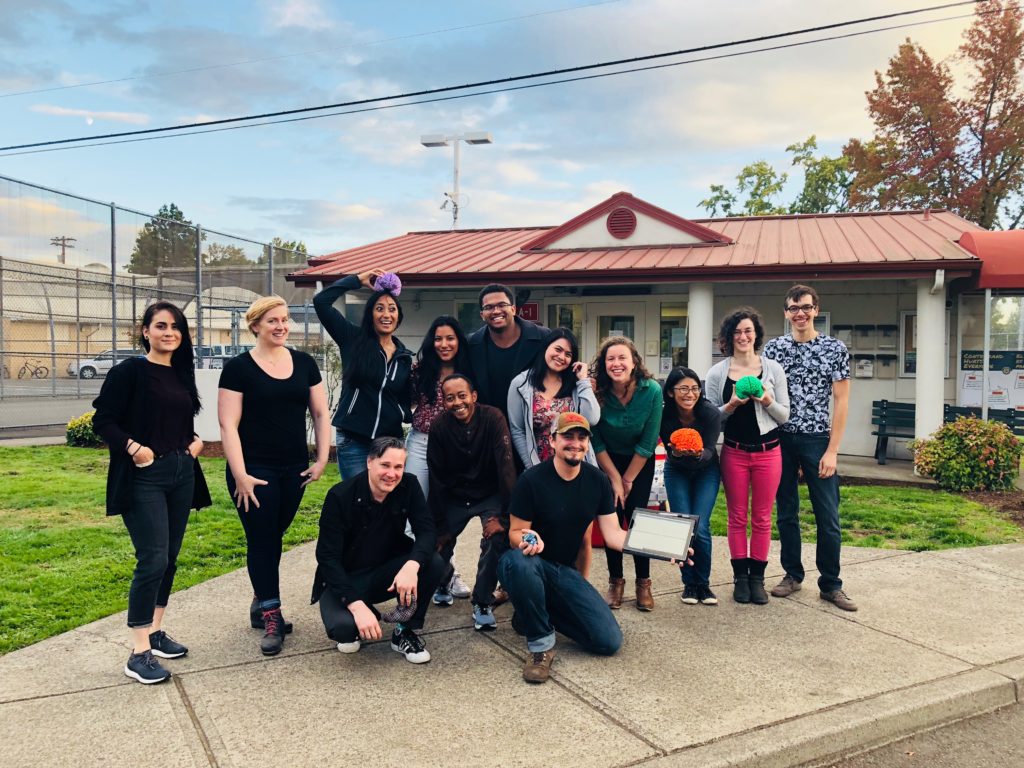
LEARN MORE: Myelinating at MacLaren
LEARN MORE: All is in motion, is growing, is you
LEARN MORE: Corrections, Bias & Brains
